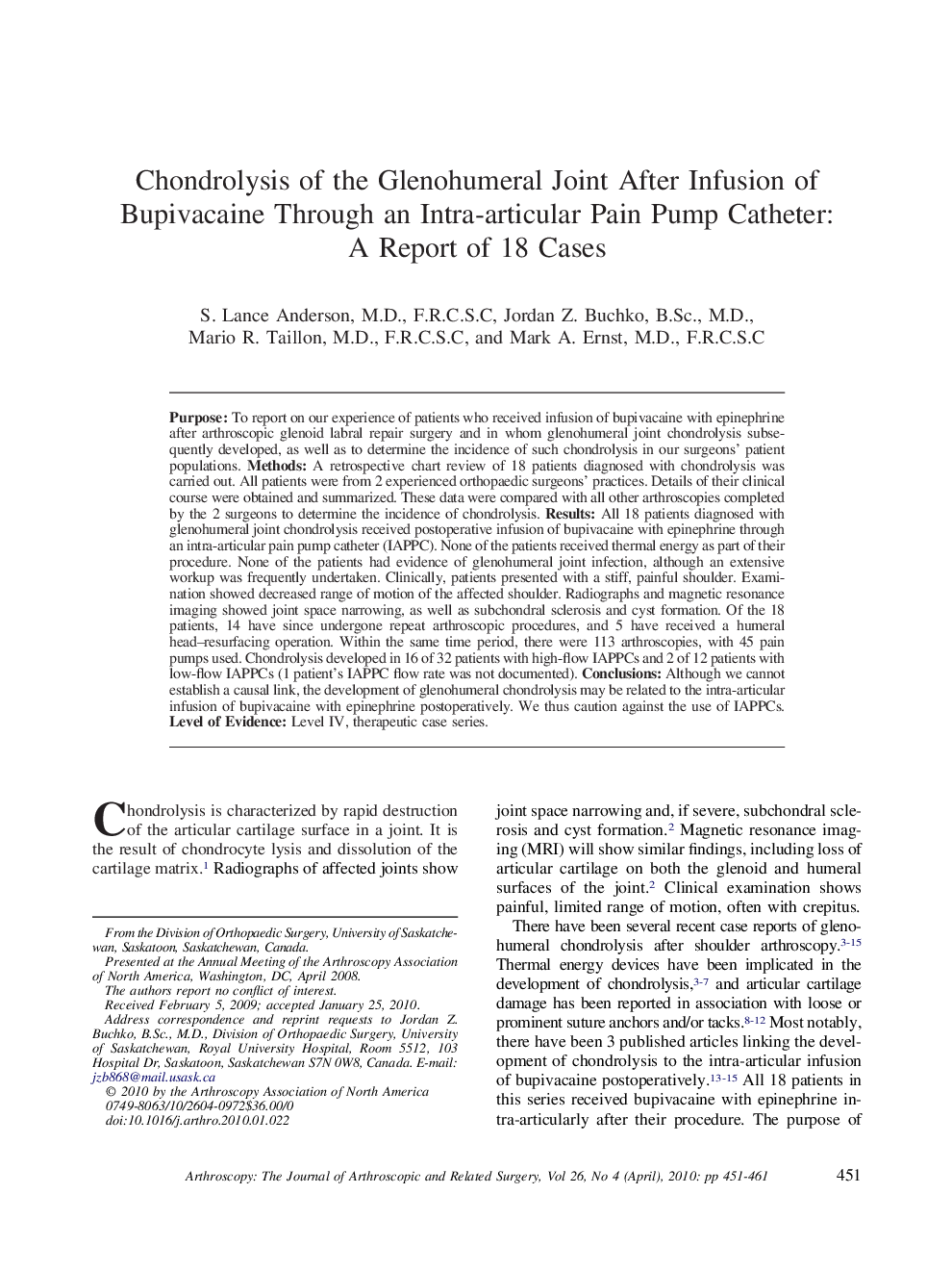| Article ID | Journal | Published Year | Pages | File Type |
|---|---|---|---|---|
| 4044495 | Arthroscopy: The Journal of Arthroscopic & Related Surgery | 2010 | 11 Pages |
PurposeTo report on our experience of patients who received infusion of bupivacaine with epinephrine after arthroscopic glenoid labral repair surgery and in whom glenohumeral joint chondrolysis subsequently developed, as well as to determine the incidence of such chondrolysis in our surgeons' patient populations.MethodsA retrospective chart review of 18 patients diagnosed with chondrolysis was carried out. All patients were from 2 experienced orthopaedic surgeons' practices. Details of their clinical course were obtained and summarized. These data were compared with all other arthroscopies completed by the 2 surgeons to determine the incidence of chondrolysis.ResultsAll 18 patients diagnosed with glenohumeral joint chondrolysis received postoperative infusion of bupivacaine with epinephrine through an intra-articular pain pump catheter (IAPPC). None of the patients received thermal energy as part of their procedure. None of the patients had evidence of glenohumeral joint infection, although an extensive workup was frequently undertaken. Clinically, patients presented with a stiff, painful shoulder. Examination showed decreased range of motion of the affected shoulder. Radiographs and magnetic resonance imaging showed joint space narrowing, as well as subchondral sclerosis and cyst formation. Of the 18 patients, 14 have since undergone repeat arthroscopic procedures, and 5 have received a humeral head–resurfacing operation. Within the same time period, there were 113 arthroscopies, with 45 pain pumps used. Chondrolysis developed in 16 of 32 patients with high-flow IAPPCs and 2 of 12 patients with low-flow IAPPCs (1 patient's IAPPC flow rate was not documented).ConclusionsAlthough we cannot establish a causal link, the development of glenohumeral chondrolysis may be related to the intra-articular infusion of bupivacaine with epinephrine postoperatively. We thus caution against the use of IAPPCs.Level of EvidenceLevel IV, therapeutic case series.
